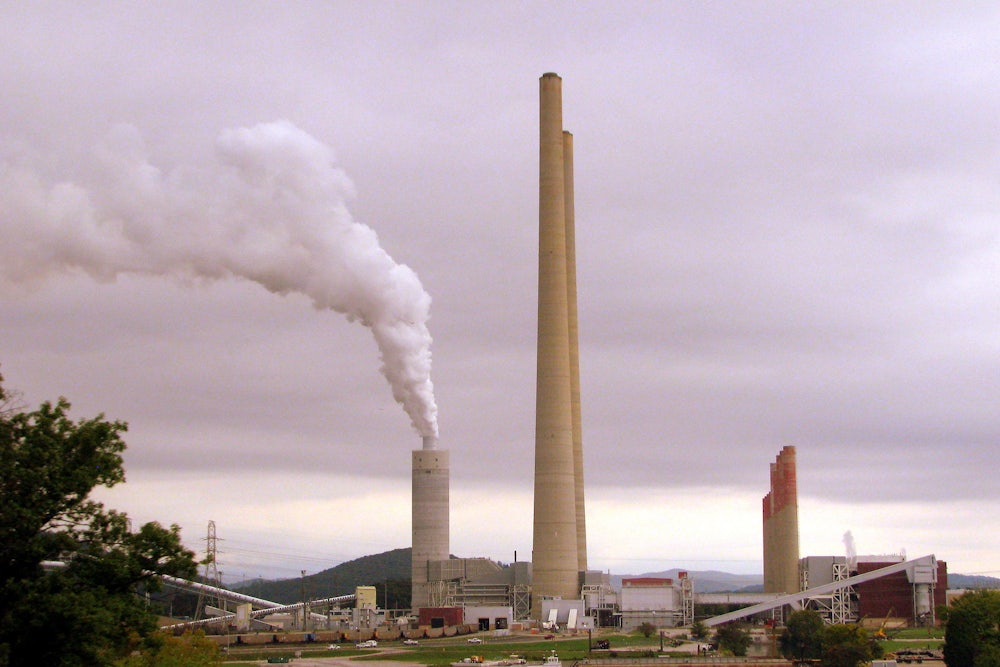Ten years ago, environmental disaster struck Kingston, Tennessee. A dike containing massive amounts of coal waste burst, releasing 1.1 billion gallons of the heavy-metal sludge onto land and into waterways. It was the largest spill of coal ash slurry—a mixture of coal-burning byproduct and water—in United States history. The cleanup at the Kingston Fossil Plant took seven years.
Today, 30 of the laborers involved in the cleanup are dead. More than 250 are still sick. This isn’t a coincidence, they argue. The contractor they all worked for, Jacobs Engineering, “lied about the toxicity of coal ash, refused to provide them protective gear, threatened to fire them if they brought their own, [and] manipulated toxicity test results,” according to the workers’ lawsuit against the company.
On Wednesday, a federal jury ruled in the workers’ favor, finding that Jacobs Engineering “failed to ‘exercise reasonable care’ in keeping workers safe and, in its failures, likely caused the poisoning by coal ash of the laborers,” the Knoxville News-Sentinel reported. The verdict means the plaintiffs can seek monetary damages to cover medical testing and treatment of everyone who worked on the cleanup.
This is an important victory for those laborers and their families, albeit too late for some of them. But it also should serve as a warning to all Americans. The Trump administration is in the process of weakening the very regulations on coal ash that were put in place as a response to the spill in East Tennessee.
When power plants burn coal for energy, it creates coal ash. The waste typically contains a variety of heavy metals, anything from arsenic to selenium to chromium, depending on where the coal was mined. Exposure is therefore considered harmful to human health. Of the 110 million tons of coal ash produced in the U.S. every year, about half is recycled into construction materials. The rest is generally combined with water that’s stored in aging dikes and ponds.
The Obama administration proposed the first-ever federal regulations on coal ash in 2014. Finalized in 2015, the rule required all utilities to implement plans to control “fugitive” dust, the type of airborne coal ash that the Kingston cleanup workers were exposed to. It also imposed new safety requirements on new coal ash storage ponds and required some old ponds to close.
Under Trump, the Environmental Protection Agency has loosened those regulations. In July, shortly after Andrew Wheeler became the EPA’s acting administrator, the agency finalized rulemaking that “will allow coal ash impoundments that are at risk for leaks—including ones within five feet of groundwater or in wetlands or seismic zones—to continue operating beyond April 2019, when they were slated to close,” The Washington Post reported. “Instead, they may remain open under the new rule until October 2020.” The new rule will also “empower states to suspend groundwater monitoring in certain cases and allow state officials to certify whether utilities’ facilities meet adequate standards,” the Post wrote.
The EPA is also crafting another rule to prescribe how coal ash can be recycled and reused for construction material. Like most EPA observers, Earthjustice attorney Lisa Evans expects that restrictions on the practice will be loosened. She hopes, however, that the coal ash cleanup workers’ case might give the agency some pause. Recycling coal ash for construction material is “exactly the type of project that can create dangerous dust,” she said.
Wheeler being a former coal lobbyist, and Trump being Trump, it’s highly unlikely that the EPA will have a sudden change of heart when it comes to regulating coal ash. But Evans said she hopes the Kingston case raises public awareness of the dangers of loose regulations. Negligence may have caused the workers’ exposure, but an old storage pond caused the spill in the first place. “It’s not realistic to protect people one lawsuit at a time,” she said. “Lawsuits mean harm has already been caused. We want to make sure requirements are in place to prevent harm in the future.”
